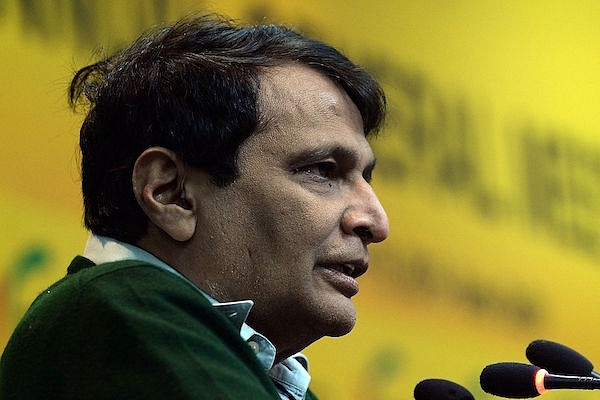
Merger Of Rail, General Budgets Should Not Be Packaged As Railway Reform
The merger of rail and general budgets raises an important question: How does the merger lead to rail reform?
If the merger has to happen, it is advisable that it is done through a process of parliamentary consultation.
“Sir, I have the honour to present a statement of estimated revenue and expenditure in respect of Indian Railways for the coming year. This occasion is worthy of note because it is the first budget to be presented under the auspices of a Government fully representative of the people of India”.
This was how Col RE Emerson, the then Chief Commissioner of Railways, opened his speech presenting the Railway Budget for 1947-48 in the Council of States. In subsequent years, Rail Budgets were presented by eminent Ministers like Dr John Matthai, Gopalaswamy Aiyangar, Lal Bahadur Shastri, Babu Jagjivan Ram, Gulzarilal Nanda, Prof Madhu Dandavate, Madhavarao Scindia, George Fernandes, Nitish Kumar, and now Suresh Prabhu.
Railway budgets traditionally have a three part structure. One part narrates the ways and means position of Railways. Another is devoted to informing Parliament and the people about how fares and freight tariffs are kept at affordable levels, commensurate with levels of service quality that the national transporter is capable of providing to rail users. The third part outlines rail development and improvement schemes in the templates of New Services and New Instruments of Service that the government seeks to introduce, for which funds need to be voted by Parliament.
Come to think of it, for the common man, does it make a difference if the Railway Budget is presented by a career civil servant as Emerson did in 1947, or by a cabinet minister for railways as now, or in the future by a finance minister, as is being proposed? Not likely.
Many railway ministers of yore preferred to read a rail budget speech in one hour or less if possible. Others who believed in showmanship have in sheer excitement made lengthy speeches, converting the Rail Budget into a political roadshow - listing development projects, please-all freebies, new interstate train services, and so on.
If the contents of the three-part Rail Ministry performance format is compressed to a 10-15 minutes package and integrated into the general budget, will it make any difference to the people? It will not.
It may be prudent to replace the time-tested annual three-part railway performance narrative with a shortened format, as part of the finance minister’s general budget. We have seen in the past that finance ministers make a superior quality budget presentation with much more versatile articulation than many rail ministers. Therefore, if one talks about dispensing with the railway budget as a purely administrative action, it is a harmless non-event.
However, if this non-issue is packaged as a railway reform measure, it will not sell easily. Attempts to highlight the scrapping of rail budget as a pretence for rail reform can bite back when brilliant journalists pose a tricky question as to how the shorter three-part rail performance report transfused into the general budget is going to enhance the operational and financial fortunes of Railways.
It is true that no other country has a separate railway budget. They do not need a separate rail budget because all other democratic nations with large rail networks have far better, more rigorous and inflexible procedures in place for rail project clearances and sanctions. The federal legislative/parliamentary oversight on rail passenger fares is more sensitive in most countries in spite of the existence of well-functioning regulatory mechanisms and private rail operating companies.
In the United States, President Barack Obama committed his country to building at least 13 High Speed Rail (HSR) lines. In 2010, the Federal Railway Administration under the Department of Transportation awarded US$ 8 billion under stimulus grants for HSR, duly authorised under the American Recovery and Reinvestment Act. However, the Senate and Congress are still not willing to fund HSR projects through borrowed funds. Unless they are convinced of adequate measures of fiscal sanity, the Senate and Congress are not easy forums to get away with railway project sanctions.
In India, the systems were made flexible and far less cumbersome. There are no mandatory elaborate public consultations-based Social Licence procedures to be adhered to in India, before including any rail project for parliamentary approval. No well-defined financial closure by prior tying up of funds is insisted upon before a project is included in the rail budget. The inclusion is done through tentative executive action. The bundled up project list is then presented to the parliament through rail budget, for voting and passing after discussion that goes on a couple of hours.
In countries like the United Kingdom and the United States, even a single railway line requires a proper Bill to be moved for parliamentary/congressional approvals – involving discussions lasting a year or several years in Parliament/Congress and their innumerable Senate and congressional or parliamentary committees. The United Kingdom started thinking about High Speed Rail just after India had announced feasibility studies for HSR in the 2007 Rail Budget. However, it could move a proper Bill only in 2014 to get clearance. In Australia, the HSR Bill has not yet moved.
In India however, the rail budget masks any need for a rail project-specific Bill; it provides shortcuts. One outcome of the merger of the rail budget with the general budget is that project-sanctioning procedures may become less stringent and parliamentary oversight may become weaker. If parliamentary oversight and social transparency are deemed important, abolishing railway budget must be accompanied by mandatory project specific Bills in the parliament.
The proposed merger of the two budgets leans on the recommendations of an Internal Committee of Rail Ministry that had accidentally wandered into the Rules of Business of Parliament. It is advisable that the merger be done through a process of parliamentary consultation.